This one had been in the calendar for a while. The third week in August is International Lighthouse & Lightship weekend, an annual activity where amateur radio operators set up portable stations around the coast to celebrate the history of our local beacons.
The obvious choice for me was Portland Bill.

It’s been a long time since I lived on the island, but various things have taken me back many times over the years, and often not far from this, one of the Dorset coast’s most recognisable landmarks.
Most ILLW stations seem to be “proper” club affairs, setting up tents and presenting the amateur radio hobby to visitors with prior agreements with the lighthouse staff. That’s not really my style though—I’d much rather just rock up with a radio and antenna, and see what happens.
But also I like to make my life needlessly difficult, so I decided to also hit up every POTA reference on the island on the way to the lighthouse.
Oh, and I invited Stu M7UTS and Joe M7JSE to join in. So it was going to be a five-location, three-operator rove across the island, taking in five POTA parks, one WWFF park, three bunkers, 12 castles, and two WAB squares, starting at 9 AM and finishing the day down by the lighthouse.
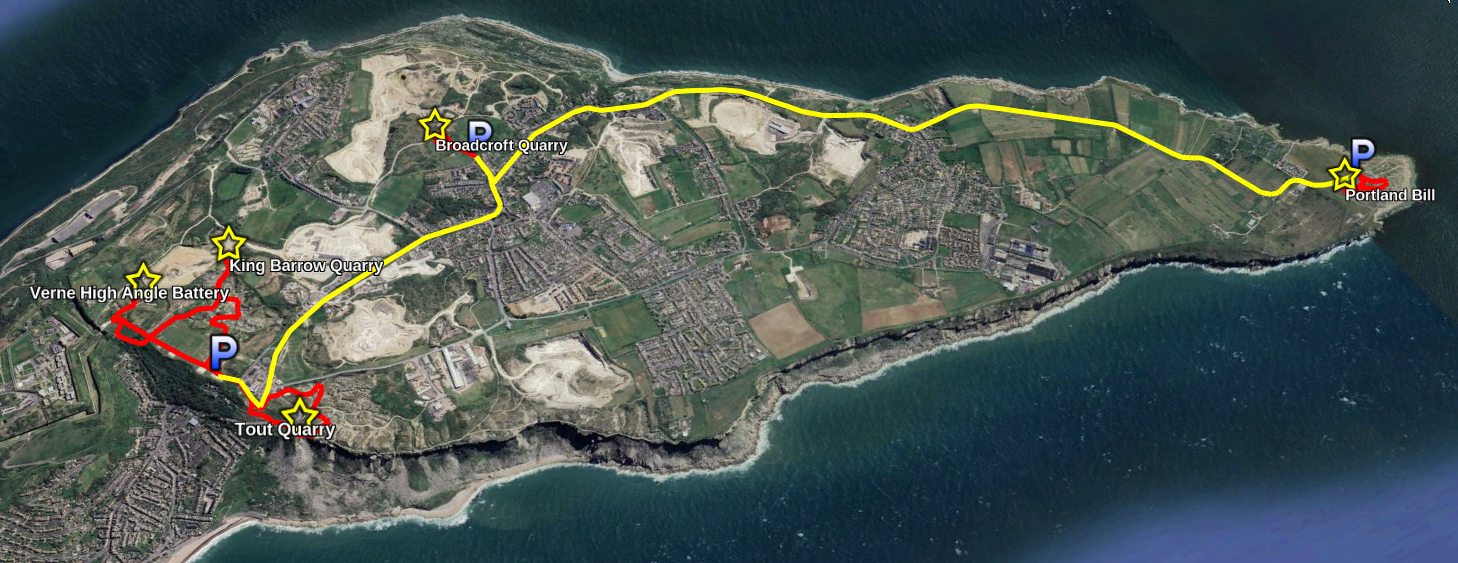
Alright, here we go!
0800-0900Z: Tout Quarry
We parked in the free car park at New Ground, a central location for the first three locations of the day, then headed down past the Portland Heights hotel and over the road to the former Tout Quarry, now a “sculpture park”. There’s a few sculptures dotted around, but as with most of the island’s disused quarries what it mostly offers is winding paths through giant piles of rock, thinly speckled with vegetation.
The wind was chilly and stronger than I’d hoped for, so we spent a while trying to find somewhere to hide from it while still having a decent spot to raise an antenna. We settled on a north-facing outcrop with an outstanding view of Weymouth and Chesil Beach, and denied the space for anything larger, we deployed the JPC-12 vertical. Like all today’s HF activities, we used my FT-891 transceiver turned down to 25W to be compliant with the UK Foundation licence conditions.
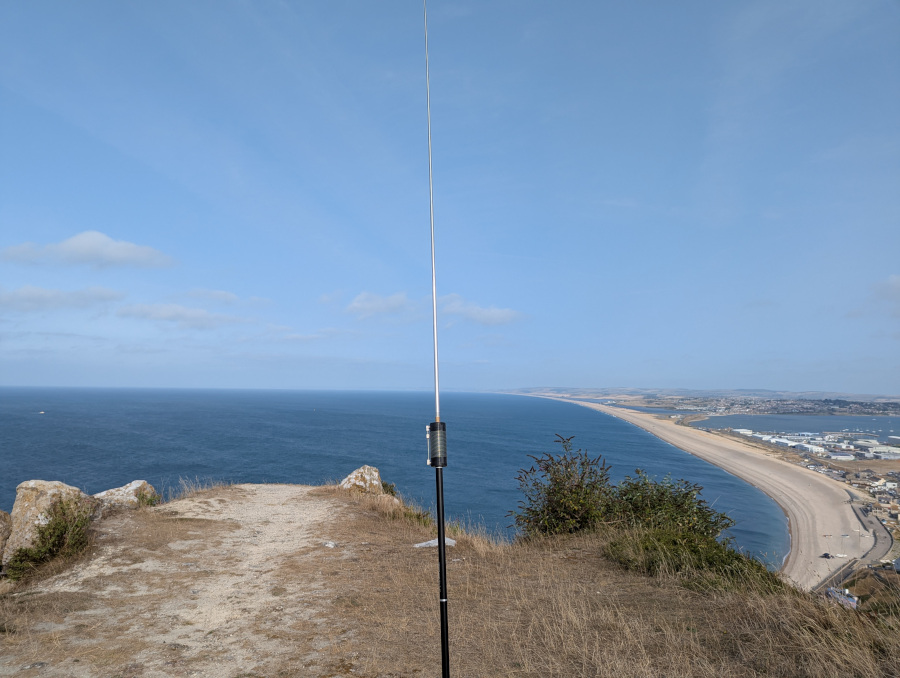
GB-4187 Tout Quarry Sculpture Park is a relatively new reference and had only been activated once before. And although we didn’t specifically visit any of them during this first activation, the corner of the park we set up in is also within range of four World Castles Award references: G-01111 Drill Hall, G-01116 Portland Cenotaph, G-01128 Verne High Angle Battery, and G-04304 HAA Gun Battery (P3 Verne).
It took us a few minutes to get going here, with several operators not understanding that there were three of us, sadly penalising the M7s who I often handed over to only to find that our QSO partner had already spun the dial.
Nevertheless, just over half an hour later we all had at least 10 QSOs in our log as far as POTA is concerned, helped by Leszek SQ9MDF and Uli DD8DR, both of whom were on 3-fer activations and worked us park-to-park, all on 20 metres.
It was time to pack up and head back over the road to our next spot of the day.
0930-1030Z: King Barrow Quarry
Back past the car park and striking out east across New Ground, we reached King Barrow quarry. I was a regular visitor here during the summer I lived on the island, aged 19. Single and not yet a father, I had a more relaxed attitude to risk on my adventures back then. I would have happily (and probably did!) climb this, with no safety equipment whatsoever:

To maximise the number of xOTA references, we headed to the north-east corner of the quarry, including passing through the quarry’s excitingly dodgy tunnel. Don’t say the “R” word…!
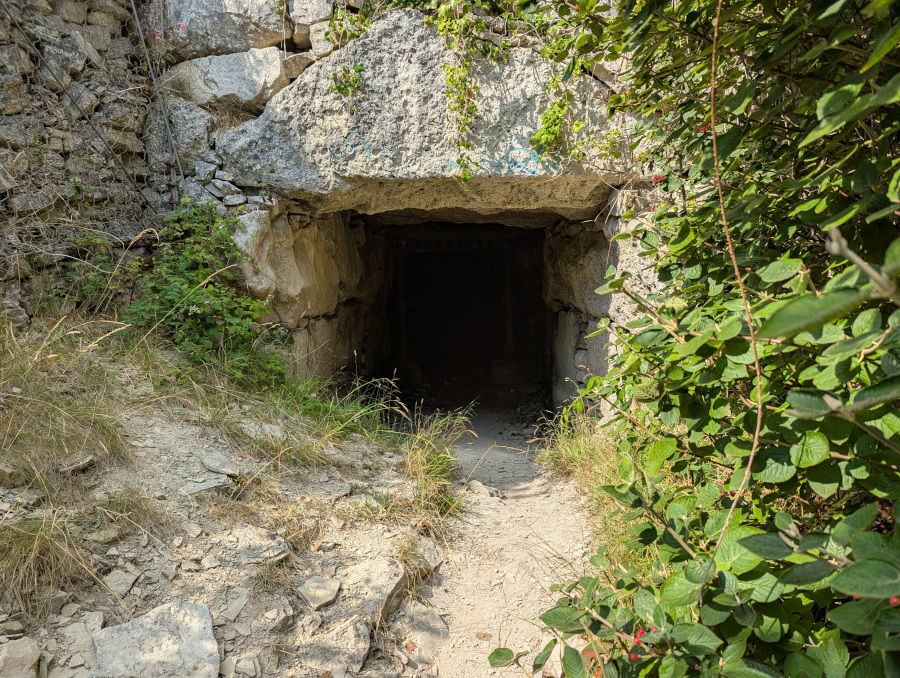
As well as being GB-4188 King Barrow Quarries Nature Reserve, the site falls within the bounds of the Isle of Portland to Studland Cliffs Special Area of Conservation, providing a POTA two-fer with GB-0133, and a WWFF reference, GFF-0331. It’s also in range of three bunkers: B/G-1169 ROTOR Radar - Portland, B/G-1835 East Weare Camp coastal defence bunkers & B/G-1836 Portland coastal defence bunkers, and no less than seven castles: G-01111 Drill Hall, G-01116 Portland Cenotaph, G-01128 Verne High Angle Battery, G-04034 HAA Gun Battery, G-01113 East Weare Camp, G-01112 East Weare Batteries, and G-01126 Verne Citadel.
Luckily we were prepared with a fully populated set of details on my QRZ page and on PoLo, saving us from having to read that lot out over the air.
After a quick experiment with the dipole antenna, we decided we didn’t have enough space, and continued using the JPC-12 on the 20m band here. It paid off, as we got callers from Ukraine, Belarus, several from Finland, and our first transatlantic call of the day with Peter K2UPD.

Speaking of the Verne, there was another spot I had hoped to hit up on this rove: the 11-reference spot just next to it, from the “Worked Everything, Everywhere, All At Once Award. However, times have changed—now that King Barrow Quarry has its own POTA reference, within the POTA/WWFF SAC area, this spot is King of the Hill with 13 separate references across 4 programmes. So as far as our local area goes, I think I can safely say we’ve done the maximum xOTA density spot!
1045-1145Z: Verne High Angle Battery
19 QSOs later, we retraced our steps back to the tunnel, then carried on to the west through a very overgrown route between two sheer rock faces, back up under the road and out the other side.
From there it was a short walk to GB-1771 Verne High Angle Battery, a surprisingly popular place with tourists despite there being very little to see. It’s an old Napoleonic defensive structure, as so many sites around Portland area are, and still has one or two of the old cannons that would have been used to defend the island from attack by sea.
This spot is really very close to the previous one, having almost all the same portable radio references, although unfortunately our choice to activate right on top of the main structure put us around 30m outside the activation radius for bunker B/G-1836. It was a great choice of spot otherwise though, as it was the perfect size to finally bring out the inverted-V dipole.
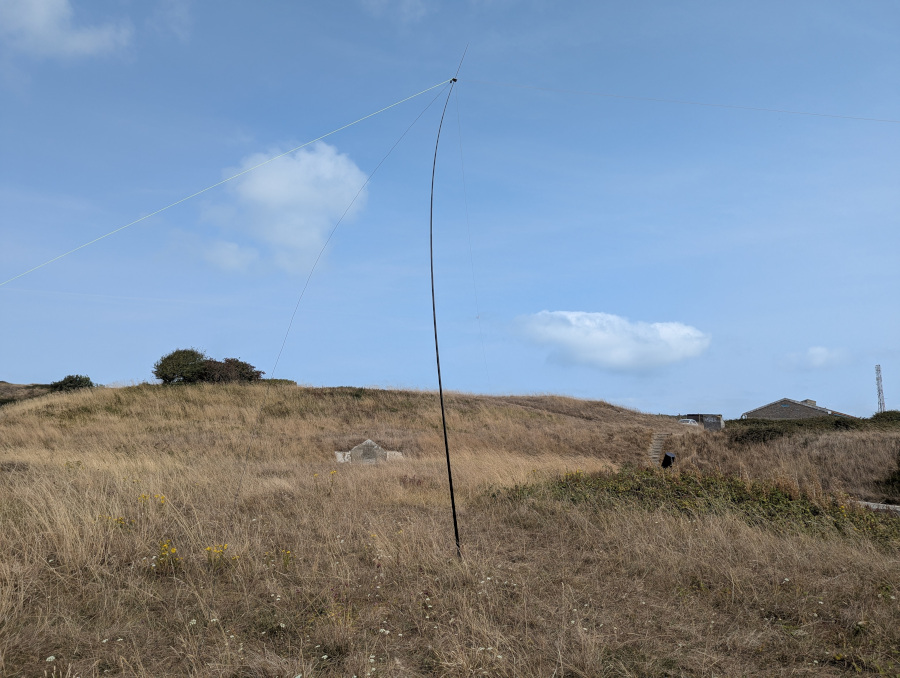
Since we could try the 40 metre band for the first time here, that’s what we settled on. Unfortunately it proved not to be a great choice, as it was pretty slow going, but it did allow us to make some shorter range contacts we otherwise would have missed, including a bunker-to-bunker with GI0BFD.
1230-1330Z: Broadcroft Quarry
After a quick supermarket meal-deal lunch, we headed for spot number four. Broadcroft Quarry is still quite commercially active, with only a relatively small area of land open to the public as a nature reserve. In the POTA database this was an all-time new one, GB-4189 Broadcroft Quarry Nature Reserve, so we put it on the air for the first time today. And while not particularly close to any of them, it falls within the activation radius of G-01111 Drill Hall, G-00316 Rufus Castle, G-00317 Pennsylvania Castle, and B/G-1836 Portland coastal defence bunkers.
Not a particularly exciting place, we kept the activation reasonably quick here, getting only 10 in the log with the JPC-12 antenna, including a park-to-park with fellow OARC member and my first ever portable contact, Seb 2E0PHG. Luckily our repeat hunters were getting the hang of things now, and we didn’t have any spin the dial before reaching the third operator—in fact, some of them were giving our callsigns before we did!

With the activation complete, we spent a bit more time here playing with tuning the vertical whip antenna that Joe had brought, along with his QMX. The whip proved mystifyingly difficult to tune, even with a NanoVNA, and seemed to want to be much shorter than you would expect for 40m. However, we compared receive performance with the FT-891 & JPC-12 combo and found them broadly comparable, so there was nothing wrong with the setup in that regard. Like myself and many others, the main problem Joe found when testing at home was a high noise floor on 40m. But this happily resolved itself down to S1 while portable, so hopefully that’s a sign of many more portable operations to come!
Testing complete, it was time to head to the fifth and final spot of the day: the lighthouse.
1400-1615Z: Portland Bill
If you’ve ever received postcards from Dorset, or even seen some tourist board 30-second supercut advert, you’ll have seen Portland Bill. (And you saw it again at the start of this post.) It’s famous, bordering on iconic, and an incredibly popular tourist destination.
The current lighthouse celebrates its 120th anniversary next year, and the two older lighthouses that it replaced (both still standing) now date back over 300 years. There are 153 steps to the top, and you can climb them if you like!
For the portable radio nerd, we were back down to just a few references—The Isle of Portland to Studland Cliffs SAC (GB-0133/GFF-0331), WCA G-01124 Trinity House Obelisk, but most importantly the lighthouse itself, ILLW UK0073 / ARLHS ENG-273 Portland Bill. For the Worked All Britain enthusiast, the tip of Portland is presumably quite a rare grid square, SY66.

We chose an area of grass a way back from the lighthouse, to keep out of the way of the hundreds of tourists, as well as several kids flying kites on this beautiful but quite windy afternoon.
This was the main activation of the day, and after a few “CQ Lighthouse” calls on 40m, we were off to a roaring start. What a difference from the previous activation the three of us did together, and from the slower pace at some of the previous spots on the rove—this was a decent pile-up almost from the first call.
It took nearly an hour to get through 21 callers on 40 metres, at which point we switched to 20 and carried on. A half hour on the band netted us another 16 QSOs, including Peter K2UPD again, and a number of lighthouse enthusiasts.
We closed out the day with a cross-channel attempt on the 2m band, first FM and then SSB, using my new-to-me FT-817nd and a four-element Yagi.
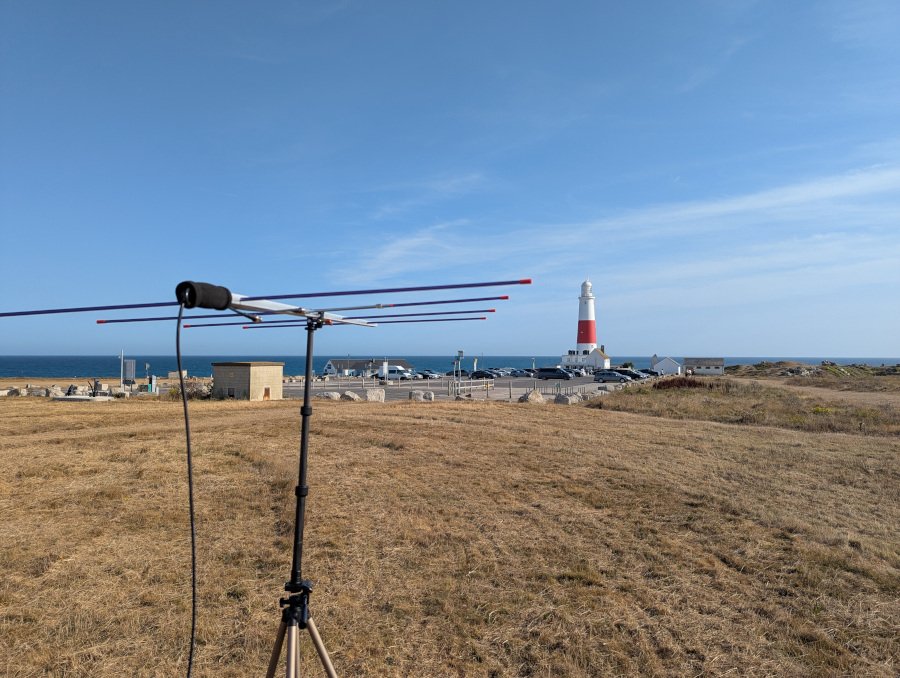
Unfortunately this didn’t prove fruitful, and after around 15 minutes I decided to call it quits on that endeavour for today. Mindful that time was ticking on towards 6pm and my friends were stood around watching me talk to nobody, we packed up the VHF kit and resolved to try again another day. I had at least proved that the 817 did transmit and didn’t let the magic smoke out, even if we didn’t manage a QSO with it today.
But all in all, it was a great day. My first multi-operator rove went very smoothly, and both Stu and Joe now have their POTA Rover Warthog awards (5 parks in a day) before they even have their Bronze Activator award (10 parks total)—a feat I’m sure not many have achieved!
We activated all the parks on the island in just under six hours, including one all-time new park and two all-time new bunkers, with 90 QSOs total in the log, and most importantly put Portland Bill on the air for International Lighthouse and Lightship Weekend.
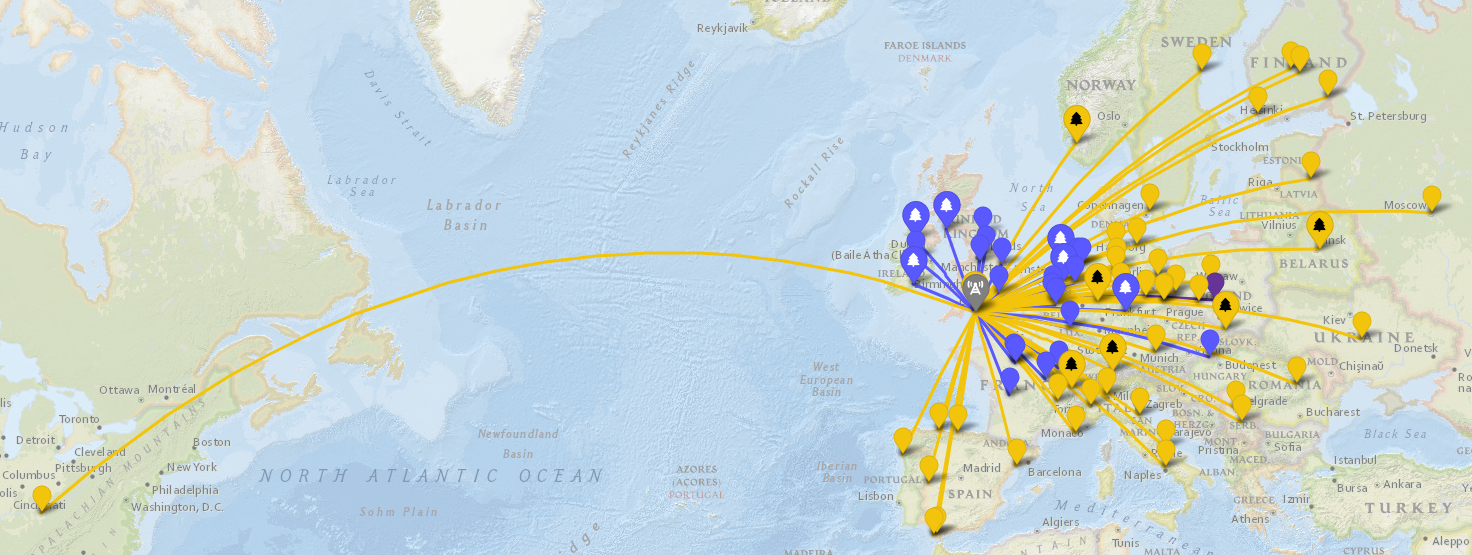
But we haven’t quite made it to the end of the post yet! This being my blog, it’s not just about radio—it’s also about shameless excuses to revisit my childhood through new middle-aged adventures.
I don’t seem to have any photos from the brief time I lived on Portland, which sadly came too late for my parents to photograph, but too early for me to have had a digital camera or a camera-equipped phone.
So I’ll have to delve a bit further back in time: here’s my dad and I at the Bill, in a photo dated August 1988.

Many thanks to all our contacts today, and of course to Stu M7UTS and Joe M7JSE for making it a great day out. See you on the air sometime soon, and next year for another Lighthouse & Lightship Weekend!
Comments